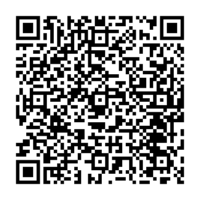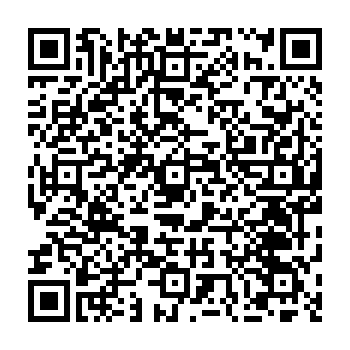You see those things around town that display information to a specific audience? Well, those are called signboards! They can be made of all sorts of materials, like wood, metal, plastic, or paper and they come in many shapes and sizes, from small directional signs to massive billboards.
Signboards are incredibly versatile and are used for a range of purposes, like advertising products or services, helping people find their way around and providing helpful information. You can spot them in all sorts of places too, from public spaces and buildings to the side of the road or highways.
In this article, we’ll be taking a closer look at signboards, including the different types, their many functions and the interesting process of designing and creating them. So, buckle up and let’s dive into the world of signboards!
Types of Signboards
There are loads of different signboards out there, each with their own special purpose. Let’s take a look at some of the most common types:
Advertising Signboards
Want to get the word out about your business or products? Advertising signboards are the way to go! You’ll find them all over the place – on billboards, posters, digital displays and even TV commercials. They’re often designed to be super eye-catching and memorable, with bold graphics and catchy slogans. Plus, they’re usually put in high-traffic areas to make sure as many people as possible see them.
Way-finding Signboards
Feeling a bit lost? Way-finding signboards are here to help! They’re meant to give you directions and help you navigate unfamiliar spaces. You’ll find them in all sorts of places – inside buildings, on roads, and even in parks and campuses. They’re usually designed to be really clear and easy to read, with simple graphics and straightforward messaging. Sometimes they’re even colour-coded to help you find your way around more easily!
Informational Signboards
If you’re looking for more in-depth information about a particular place or topic, check out an informational signboard! You’ll find them in museums, parks, and other public spaces. They’re often designed to be really educational, with lots of detailed information and graphics to help you understand whatever you’re looking at. You’ll usually find them in areas where visitors are likely to hang out for a while, like near exhibits or in visitor centres.
Now you know all about the different types of signboards, what they’re for, and how they’re designed and created. Keep your eyes peeled next time you’re out and about – you might just spot one of these signboard superstars in action!
Safety Signboards
Safety signboards are used to warn people of potential hazards and help prevent accidents. They can be found in workplaces, on roads and in public spaces like parks and beaches.
Safety signboards are typically designed to be clear and easily understood, with simple graphics and concise messaging. They often use bold colours and symbols to quickly grab the viewer’s attention.
Designing and Creating Signboards
Creating a signboard that effectively conveys its message requires careful planning and attention to detail. Here are some key factors to consider when designing and creating a signboard:
Purpose
Before beginning the design process, it is important to determine the purpose of the signboard. Is it meant to advertise a product or service, provide directions or way-finding assistance, or offer informational content? The purpose of the signboard will determine its content and design elements.
Audience
Knowing the target audience for the signboard is essential in creating an effective design. Who will be viewing the signboard and what are their needs and preferences? Understanding the audience will help in tailoring the design to their specific needs and interests.
Location
The location of the signboard is another key factor to consider. Will it be placed indoors or outdoors? Will it be in a high-traffic area or a more secluded spot? The location of the signboard will determine its size, visibility, and durability as well as any necessary weather-resistant features.
Design
The design of the signboard is critical to its effectiveness. It should be easily recognisable, with clear and concise messaging and a layout that is easy to follow. The typography, graphics, and colours used in the design should be carefully chosen to ensure that they convey the desired message and capture the attention of the intended audience. Additionally, the signboard should be visually appealing and memorable, making it more likely that viewers will remember and act upon the information it conveys.
Materials
The materials used to create the signboard are also important. Different materials offer different levels of durability and weather-resistance, so-it is important to choose materials that are appropriate for the signboard’s location and intended lifespan. For example, a signboard placed outdoors in a harsh climate may require more durable materials than a signboard placed indoors in a controlled environment.
Common materials used for signboards include wood, metal, plastic, and paper. Each material has its own advantages and disadvantages, so it is important to choose the right material for your specific needs.
Typography
When designing a signboard, the typography should not be overlooked. It’s crucial to use fonts that are easy to read and appropriate for the message and audience. Choosing too many fonts or hard-to-read fonts can make the signboard perplexing and hard to understand, especially from a distance.
Colour
The use of colour in signboard design can also have a significant impact on its effectiveness. Colours should be chosen carefully to convey the appropriate message and elicit the desired response from viewers. For example, bright, bold colours are often used in advertising signboards to grab attention, while more muted colours may be used in informational signboards to convey a sense of calm and professionalism.
Conclusion
Signboards are an important part of our daily lives, providing us with valuable information and guidance. Whether they are advertising products and services, providing directions or conveying safety information, signboards play a critical role in communicating with the public.
Designing and creating an effective signboard requires careful planning and consideration, taking into account the purpose, audience, location, materials, typography and colour. By paying attention to these factors and creating a well-designed and well-crafted signboard, you can ensure that your message is conveyed clearly and effectively to your intended audience.



